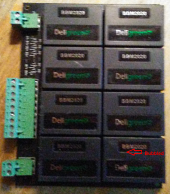Do we need active balancing during discharge?
I have a 16s with a voltage detection controller
Trigger set on at 53.6V then trigger off at 51.2v dod
My question, should the balancer turn off when charging stops?
This active balancer really help my pack to be balance during charging and my pack seems better ever since i installed an active balancer.. my pack was suffering from one cell hitting ovd 3.6v then other cells are unable to take a more charge then also hitting LVD too early at 51.8v pack voltage
Does active balancer help during discharge or should i just turn it off after charging
We fully recharge our cells each day, or at least try to.
Cells cycle between full charging voltage, and to something much lower down the discharge curve at night.
Now each of our cells might have a slightly different amp hour capacity, and this difference may grow after long usage.
To overcome these cell capacity differences, and get the most from the whole battery, we top balance.
We make sure that all the cells charge up to the exact same voltage.
During discharge the cell voltages diverge, sometimes by quite a lot. If the balancer is still running, it can mess things up, and undo the good work.
We really only want the balancer to run when the battery is fully charged and at full charging voltage. As soon as we start a discharge we should really switch off the balancing function, because it can then do more harm than good.
Some people have different ideas about all this, but the consensus seems to be, that for solar applications, top balancing only is best.



